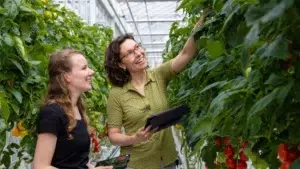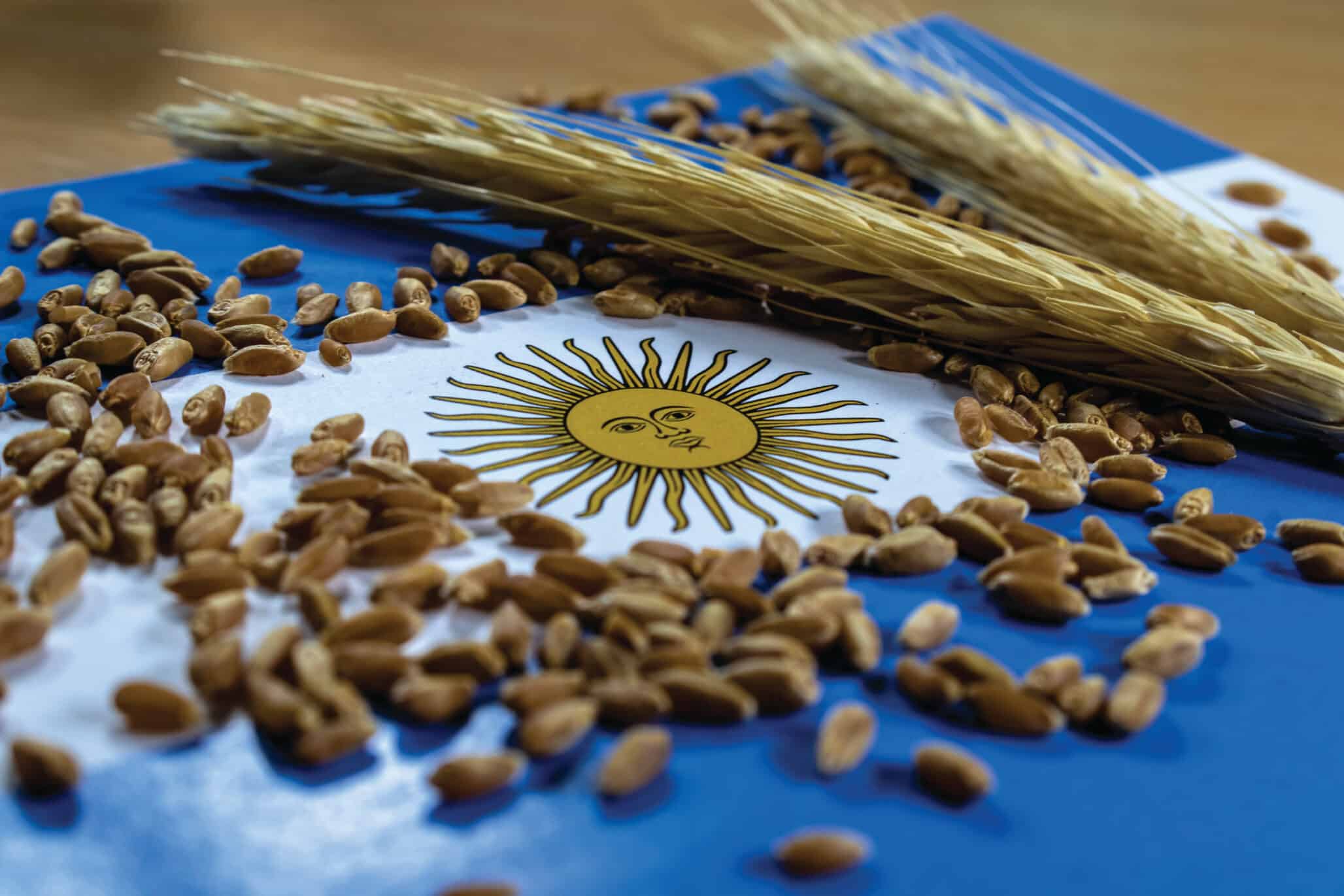As of the first of January I have handed over my responsibilities as head of the Naktuinbouw Variety Testing Department to my successor, Bert Scholte. Such an occasion is always a good time to reflect, to sit a while and mull over the past and especially the past year’s events.
Cooperation and Molecular Techniques
Reflecting also means taking a step back for a different perspective. So I would like to look back on the series of visits I made to China, India, the U.S. and the CPVO all within a month. We also welcomed two colleagues from Japan to Naktuinbouw. Still impressed by all the experiences during my travels, this is a good opportunity to distil a common thread from the developments in the world relating to Plant Breeders’ Rights. During all the visits there were two recurring themes: cooperation and molecular techniques. These are important topics for the Netherlands. International cooperation can signify that by adopting each other’s reports, one single application for Plant Breeders’ Rights can be granted in multiple countries. And molecular techniques will contribute to increasing the efficiency of testing.
China: Ready for the Next Step
At a forum on Intellectual Property Rights (IP) for plant varieties in China, it was apparent that the debate on the possible upgrading of the Plant Breeders’ Rights system to UPOV ’91 is still raging. Of the points causing the biggest headaches: Plant Breeders’ Rights for the entire plant kingdom, Essential Derived Varieties and farmers’ privilege, only the latter point can still be seen as a potential ‘deal breaker’. The restrictions placed on the right to save seeds is a bitter pill to swallow for many small farmers.
After the European system, the Chinese system of Plant Breeders’ Rights already has the highest volume of applications annually. This places immense pressure on the system to process all these applications properly. The Chinese authorities have therefore requested help in training high numbers of new personnel. The European Union (the CPVO) will play a coordinating role in this respect. The Netherlands was thanked for all the assistance given during the first 15 years of establishing the Chinese system. Further agreements on training have been made for 2017.
The attention devoted to using molecular techniques in DUS testing was notable. China sees this as a good way of coping with the number of applications, and a potential way to avoid the problem of building up a reference collection.
With its colleagues at GEVES, Naktuinbouw submitted a project proposal to the CPVO to establish a DNA database for tomatoes using an SNP marker set based on DNA sequencing. After being invited to participate, the Chinese colleagues indicated their willingness to be the third partner in this project. This means the project will be the first of its kind within the world of Plant Breeders’ Rights to be run on such an international scale.
India: Seeking to Harmonise
In Delhi, I took part in a workshop on Convention Countries and Essential Derived Varieties (EDV). The workshop was organised by the Indian Protection of Plant Varieties & Farmers’ Rights Authority, in collaboration with Germany, the Netherlands and the CPVO. The workshop revealed that India is facing the same problems with the EDV definition as the UPOV. A complicating factor is that the EDV concept is embedded and recognised in legislation in India. The Protection of Plant Varieties & Farmers’ Rights Authority therefore decides whether a variety is an EDV or not.
The concept of Convention Countries is based on an article in Indian legislation, which enables other countries to be recognised as Convention Countries. Recognition grants the citizens of both countries identical rights relating to breeders’ rights. This construction is necessary as India is not a member state of the UPOV. Within the UPOV, this form of recognition between member states is automatic. The intention is to apply these principles on the basis of reciprocity.
After the workshop, the decision was taken to cooperate on a technical level, to see whether reports can be accepted and adopted mutually at a later stage. This would considerably simplify the procedures for Dutch applicants. Working agreements were made, and a reciprocal visit is planned in the Netherlands for February 2017 to discuss matters further. At that time, a meeting will be held between representatives of the Dutch and German business sector and the Indian delegates. This will serve to improve contacts between India and the UPOV. India would like to join the UPOV, but current legislation, which grants many rights to farmers, precludes this.

Japan: What Can We Learn from the Dutch System?
The focus of the visit by our colleagues at the NCSS (National Center for Seed and Seedlings), the Japanese DUS testing station, was on logistics and DUS testing techniques. They aim to make the system in Japan more efficient and are therefore looking for ways to cooperate in this area. At the end of the visit we agreed to jointly establish descriptive manuals and drew up the text of a cooperative agreement. This should ultimately lead to both countries adopting each other’s reports. Molecular techniques were also discussed during the visit, specifically in this case for infringements of Plant Breeders’ Rights. Unfortunately, in Japan they only accept results based on SSR markers which are only available for a handful of crops. We once again explained that AFLP, provided it is correctly applied, is also an acceptable method that can be used for all crops.
USA: A Progressive Outsider
I was invited to give a presentation on the use of molecular techniques and the system of Plant Breeders’ Rights in Europe during the annual convention of the PVPO Board. The subject of molecular techniques featured high on the agenda here too. With soya in particular, there are often varieties where distinctness cannot be determined using the morphological UPOV traits, although there are other differences. Emergence is one of these.
Efforts are being made with companies to develop a system with a threshold value for soya. For applications concerning crops where differences exist but cannot be determined using the customary methods, DNA comparison will be used. If this shows sufficient distinctness (above the threshold value) that variety can still be granted Plant Breeders’ Rights. A long debate followed as to whether this approach would be acceptable within the UPOV. My suggestion to apply the same method for such traits as that already used for certain electrophoretic traits in wheat was welcomed as a promising proposal. We agreed to investigate this in more detail during the UPOV working group meeting on molecular techniques (BMT) in La Rochelle at the end of 2017.
Growers are also urging that reports drawn up by other UPOV member states are accepted and adopted by the USA. In the ensuing discussion, the authorities demonstrated their willingness to consider the matter. This is necessary as the American system is seen as an outsider within the UPOV. The applicant performs DUS testing entirely independently and establishes the results of this test. The authorities then compare the results with the details of the existing varieties in the database and if there are no irregularities, Plant Breeders’ Rights are granted. Extensive protocols are in place which growers must observe. It is difficult for the authorities in the USA to adopt reports from other UPOV members as they are not compatible with the format of the database. In the database, traits are often established using measured values and not as classes as in other UPOV member states. Creating a pilot project using one crop is also being considered to identify which aspects of the system need adapting to make them compatible.
European Union: Ironing Out the Last Creases
Discussions at the annual meeting of the DUS testing stations of the CPVO were less heated. The system is up and running, is widely appreciated and there is little reason to implement rigorous changes. But despite this, international cooperation was an item. The DUS stations in attendance often saw problems in this field, and were less prepared to adapt the system in order to work with third parties. Willingness was shown, however, to be more flexible regarding adopting reports mutually. This should not be a problem in the group of stations operating within the CPVO system. There is a separate working group at the CPVO acting as a think-tank to promote the use of DNA in DUS: IMODDUS.
Conclusion
Re-reading this summary, I cannot fail to conclude that the Plant Breeders’ Rights system in the world is alive and kicking and preparing for a new phase. The focus will shift from classic morphological observation to a greater emphasis on the laboratory. International cooperation will continue, in the form of a formal international system of cooperation, or an alternative. The dynamics of breeding companies faced with the challenge of making progress in securing food supplies for the growing world population, demand an appropriate system of identity determination and protection.
With the conviction that my colleagues are perfectly equipped to resolve this challenge, I look forward to this future.
—Kees van Ettekoven is head of the variety testing department at Naktuinbouw












